Yacon’s edible tubers are sweet and crunchy, giving it the nickname “ground apple.” Yacon root is crunchy and a little bit sweet and great as a snack or on a salad. The best part, though? It’s easy to grow and takes very little care.
Try this recipe to make a cooked yacon sauce that resembles applesauce!
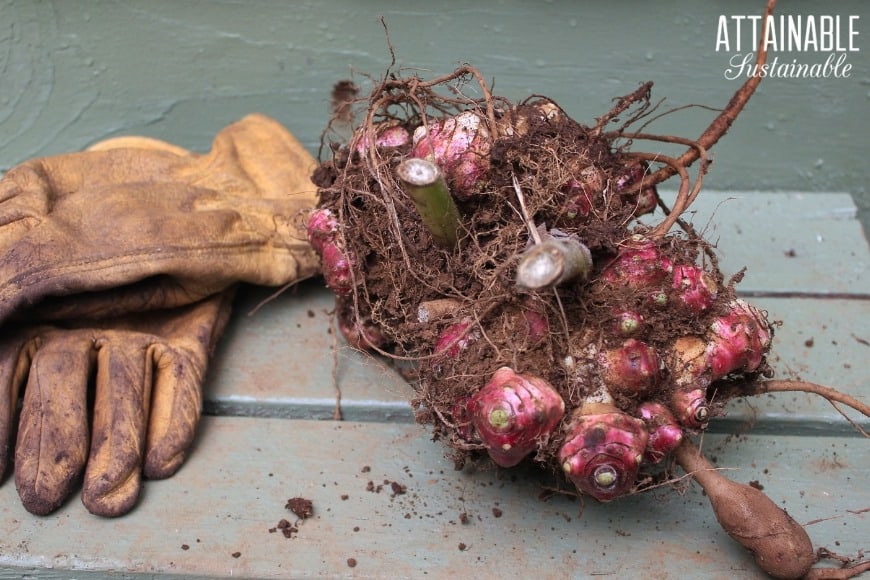
Years ago my friend, Angela, brought a bag of freshly harvested yacon root along with a box full of tubers to plant. Yacon is fairly new to my family, but we love it. It’s crunchy and a little bit sweet (it gets sweeter the longer it’s stored) and great as a snack or on a salad. It’s a little bit like a cross between jicama and an apple.
Now we grow yacon root yearly. It’s an easy crop — plant it and forget it — that takes 6-7 months to mature.
New to gardening? Limited on space? The 5-Gallon Garden gives you the skills you need to grow food in the space you have. Get started with your garden today!
Growing yacon root
Yacon (Smallanthus sonchifolius) is native to South America, where it’s eaten like a fruit. Can you grow it where you live? Mother Earth News says if you can grow dahlias where you live, you can grow yacon. Plants will reach 5′-6′ high.
And trusty ‘ole Wikipedia says this, which makes yacon root a good choice for diabetics and weight loss:
Grow Some Greens!
Ready to grow fresh greens, no matter WHERE you live? Sign up for my
FREE quick-start guide and start growing some of your own food!
The tubers contain fructooligosaccharide, an indigestible polysaccharide made up of fructose. Fructooligosaccharides taste sweet, but pass through the human digestive tract unmetabolised, hence have very little caloric value.
Moreover, fructooligosaccharides have a prebiotic effect, meaning they are used by beneficial bacteria that enhance colon health and aid digestion.
My first attempt at planting yacon in the ground left us wondering if would ever sprout. Turns out, I planted it a bit deeper than I should have. It still sprouted and grew into five-foot-tall plants, but it took longer than expected.
Planting yacon root
To plant the yacon rhizomes, dig a hole about 12″ in diameter and just as deep. Return about 6″ of soil to the hole (this gives the rhizomes softer soil to grow in). Set a rhizome or two in the hole and cover. Mark the location of the hole so you don’t forget where you planted it!
Soft green leaves should appear in a month or so, and continue to grow taller for months. When the plants flower, it’s time to harvest. Dig up each plant carefully — place your shovel a foot or so away from the main stalk to avoid to avoid slicing into the tubers, which can extend beyond the stem by 12″ or more.
Harvesting yacon root
The base of the yacon plant has both rhizomes and tubers. The rhizomes are a creamy white that turn pink when exposed to sunlight. These are edible, but are generally only used for propagation. The tubers resemble a potato somewhat, with a smooth, thin light brown skin. The white flesh of the yacon root is somewhat translucent.
Separate the small rhizomes from the larger brown tubers. Set the rhizomes aside for replanting, and clean the tubers. Store yacon tubers in a brown paper bag in a cool place. The fruit gets sweeter if it has a chance to sit for a month or two.
I’ve found that oftentimes a new yacon plant will sprout right were an old one was, even if I didn’t intentionally plant it there, thanks to a rhizome or two I missed during harvest.
Using yacon root
Besides eating it fresh, yacon is good in smoothies and I make a mock applesauce with it as well. The one drawback of yacon is that it oxidizes very quickly, turning kind of an ugly grey. Which means it’s not great on a pretty fruit platter.
Originally published in April 2015; this post has been updated.
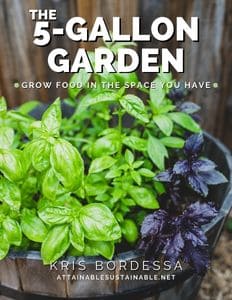
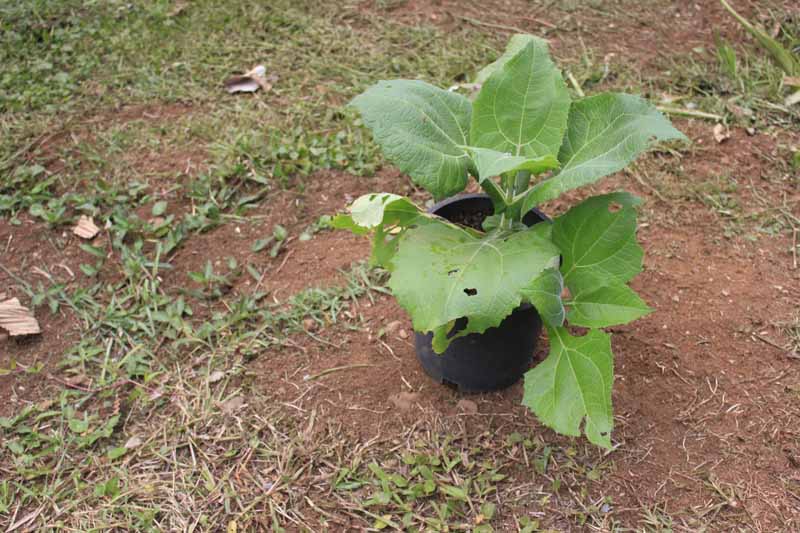
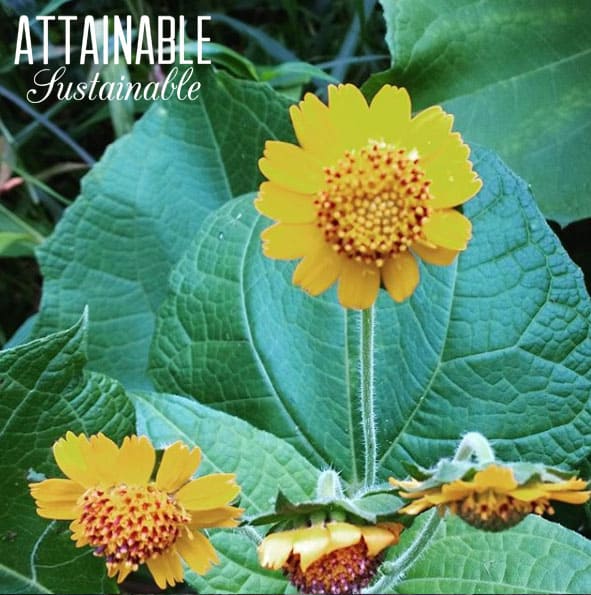
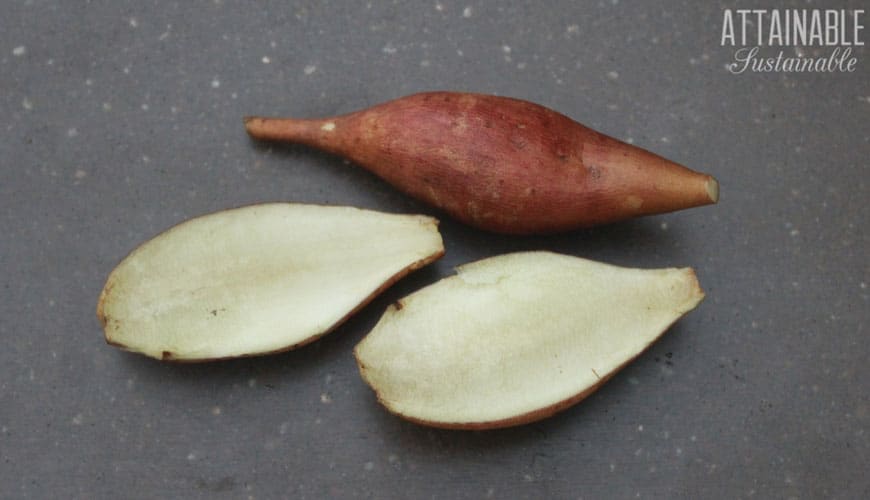
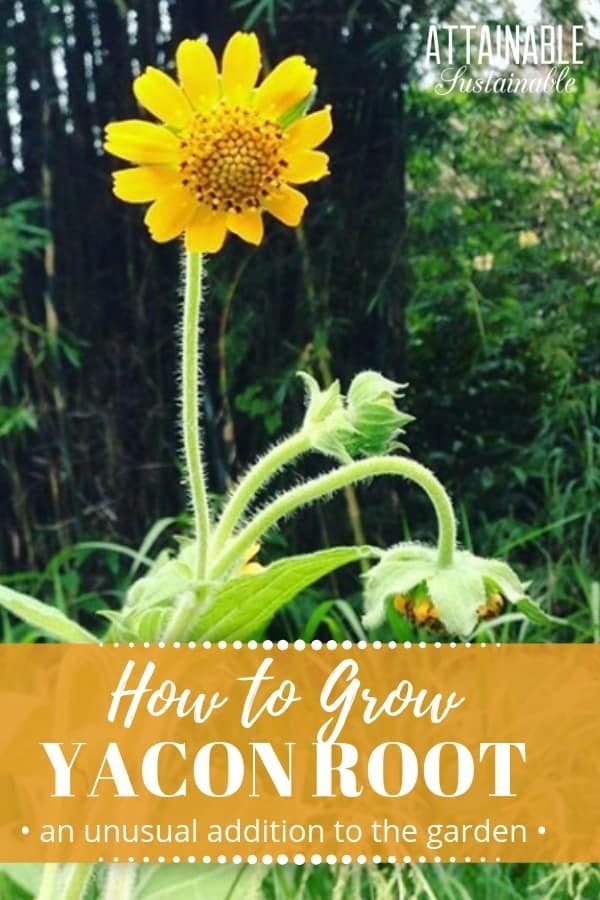

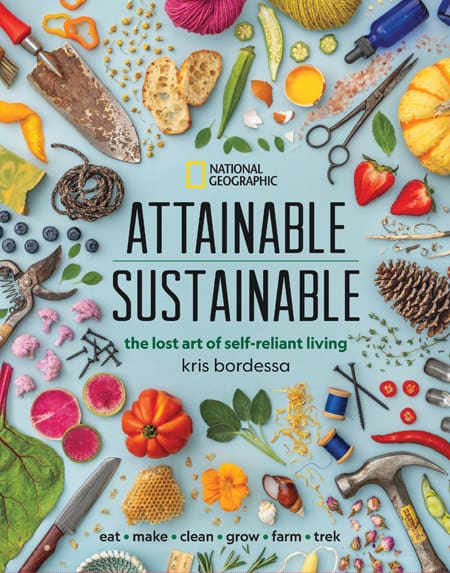
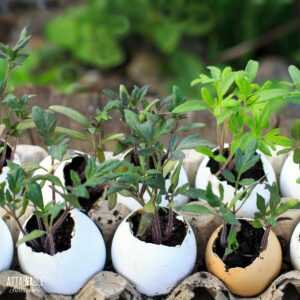
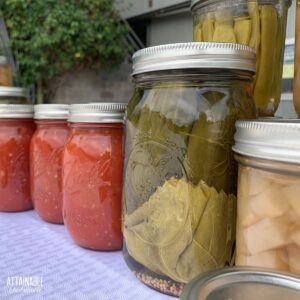
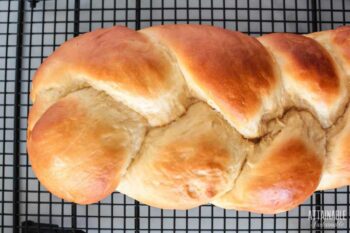
Thank you for a wonderful infos, i am diabetic and i will appreciate if you can share if where can i buy a rhizomes of yacon so i could be able to grow my own. Thank you and God bless.
If you don’t find any locally, there are a lot of options online!
I ordered 3 tubers @$7 each; all grew. Only recently the little flowers came on and now the plant is dying back. Supposedly we can harvest in June in Queensland. Shall report back. I started growing it as a site Nutrition Matters promoted it as a functional food with multiple health benefits as well as being the most powerful, known, natural prebiotic on the planet. I did grow Jerusalem Artichokes/sun chokes one year but they truly create a lot of flatulence.
Just received my plants and am anxious to see how they do in my greenhouse in Alaska
You’ll have to report back!
Where do you live and where could I get a rhizome or two? I currently live in Texas but plan a move to central Missouri within the year. Can’t wait to start my garden and collecting edibles for a natural garden.
I’ve heard that Yacon is an invasive plant? I’d like to know if this is true before I plant some. Jane
I’d consider it persistent, but not invasive. About half of the plants I harvested sprouted again, I assume because I left a tuber or two in the ground. It won’t creep, though.
Unless you live in a very warm climate, it is best to start yacon rhizome indoors in pots. As you experienced, it takes a long time for yacon to get growing in cool soil. A slow start means smaller plants. There is probably about a four-fold difference in yield between a plant with half a dozen four foot tall stems and a plant with a dozen five foot stems.
This is good to know! Thanks.
That’s so funny – the reddish tubers look just like sunchokes! I’ve seen Yakon in the Raintree Nursery catalog but couldn’t decide if they were worth a go. A tuber eaten like a fruit is pretty cool!
Great for me, since apples are hard to grow here. Having something similar, if not exactly an apple, will be great.
i’d love some rhizomes when you harvest!
We love Yacón…I tried growing it but I think it is a bit too wet here, as my plants were barely a foot high and they turned slimy black and died. I wish I could grow it!
I came up with the idea of using some in a salad using purple sweet potatoes, yacón and watercress – the combination is delicious. I sort of ‘shaved’ the yacón for this dish, using a vegetable peeler.
It will probably work if you use a raised bed about a foot tall.
I’ve never heard of yacon but it sounds wonderful! I’ll have to see if I can find one.
I am with you Angi…please do share if you locate any and I will do the same. Shirley
rareseeds.org has yacon available in their catalog.
Onegreenworld.com. Based in Portland, Oregon.
Onegreenworld.com